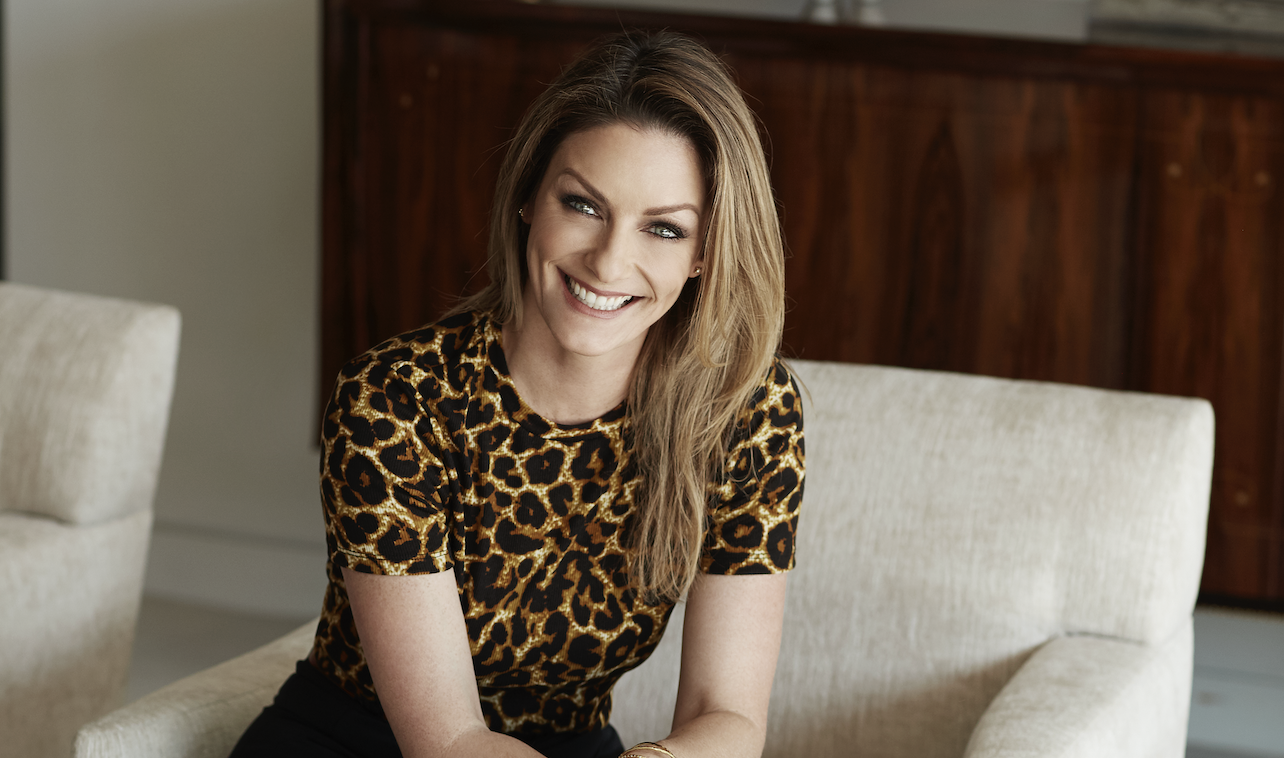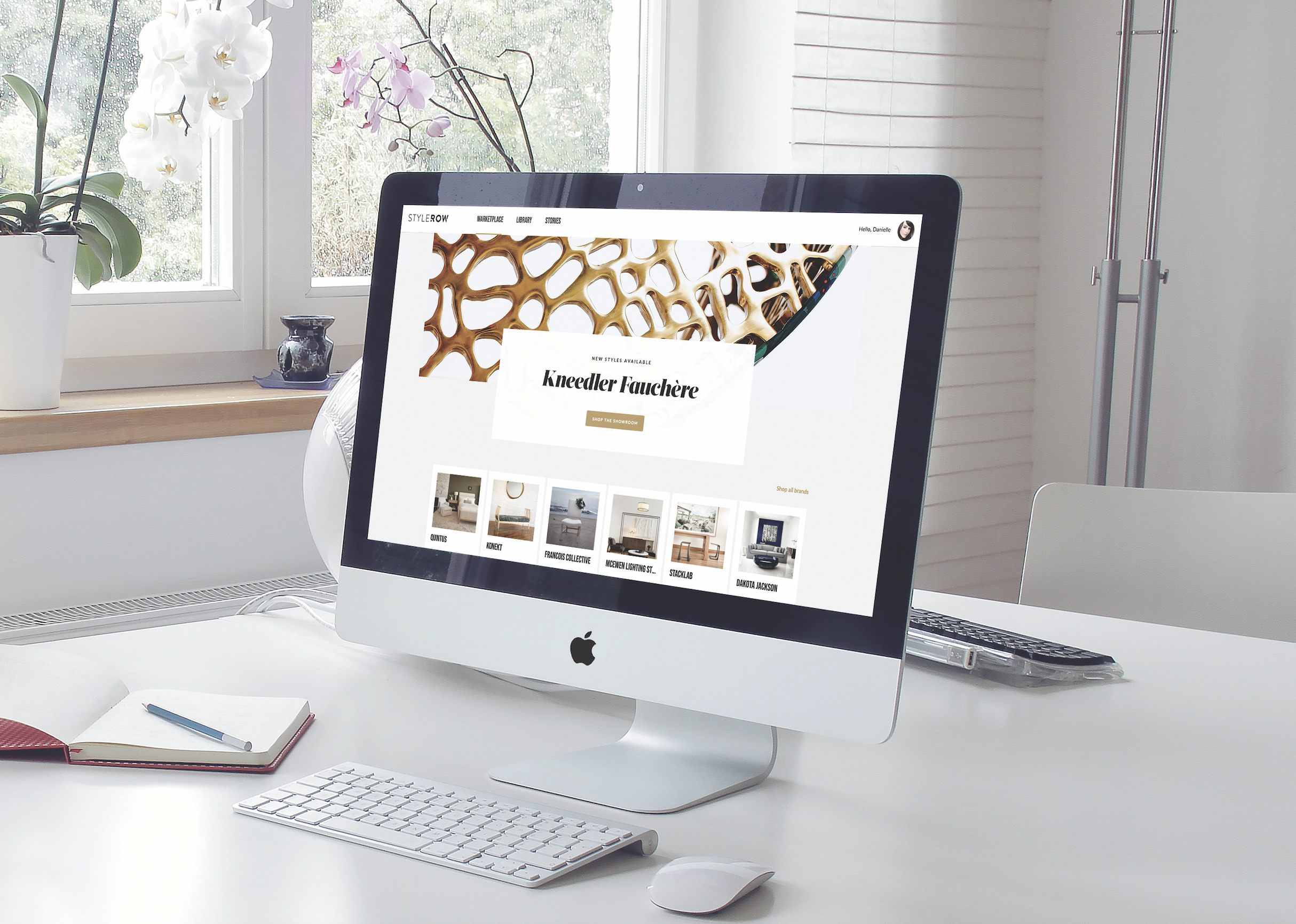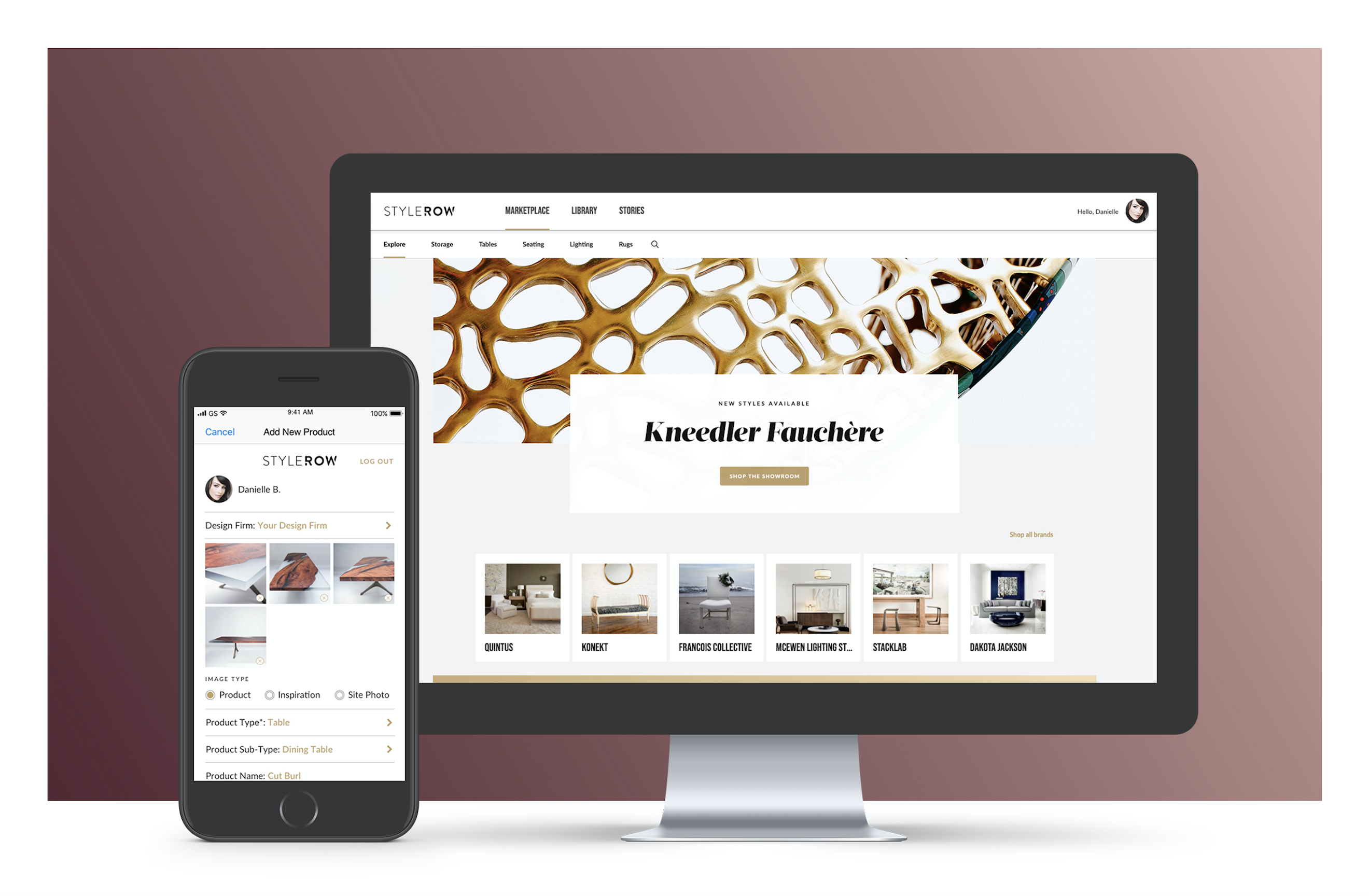Interview by { Beth Weitzman
Like many of her industry peers, Los Angeles-based interior designer Erinn Valencich felt overwhelmed by paperwork and frustrated by outdated procedures for project management. She longed for a 21st-century tool that could streamline the interior design business and make life easier for designers, architects, venders, showrooms and clients. If Uber could change the way people go from place to place, why couldn’t she invent a platform to bring digital technology to the design space? Although she had zero related experience, Valencich was not deterred. In fact, she was emboldened. Having recently raised $4 million in seed money from major venture capitalists in L.A. and Silicon Valley, Valencich launched StyleRow in September 2019. Here, she gives us the inside story on her latest entrepreneurial endeavor. stylerow.com
You’ve run a successful interior design firm for 16-plus years. You’re the visionary behind ERINN V., a 90-piece line of luxury furniture handcrafted in California and available at fine to-the-trade showrooms. You have collaborations with brands, such as Baldwin Hardware, Fine Art Lamps and Creative Touch Rugs. Why develop StyleRow?
The digital IQ of the design industry is far behind the times. I was fed up with the paper-heavy workflow, and moving data manually from one platform or app to another to another, just to get the project done. I know how hard it was to attempt to streamline my business through software that wasn’t built for design professionals and always fell short. That’s when I decided to build an operating system for the design industry that pulls it all together. That is what StyleRow does.
How exactly does StyleRow solve the industry’s outdated ways?
Designers end up spending about 80 percent of their time doing administrative duties, order processing, scheduling and logistics, and only 20 percent on creative. Luxury furnishings brands sell to designers and architects via fax and archaic methods. Sharing products digitally with clients and design teams is difficult and not efficient; there is no e-commerce in high-end furnishings either. Purchasing is overly time-consuming and so much time is lost tracking things down. My goal was to make technology easy and accessible for the luxury design market and help designers and architects streamline their workflow by creating one platform to do everything they need to do. StyleRow is designed to follow the entire design process—starting with a digital product library that allows designers to save all their favorite items to shop later—moving into budgets and presentations, through sourcing in our trade-only marketplace and sharing product with clients in a beautiful digital presentation. Our software tracks all the communication and gives designers a mission control from which to run their projects all the way through invoicing and order management.
How does StyleRow speak to the next generation?
Millennials are sourcing online first, and by 2025 [they] will be 75 percent of our workforce. Clients are getting younger, too, and they demand digital tools to interact with their projects. If brands don’t provide an easier, better way for their designer-customers to engage with them, they run the risk of becoming obsolete. That is the way it is in every industry, but home furnishings has been slow to adopt. But they are. The industry knows it’s time to let go of the fax machine and move ahead—fast.
Tell us more about the projects functionality on StyleRow.
Our projects tool rolls together the visual reference of a Pinterest board with communication tools, and replaces Excel and Keynote/PowerPoint. StyleRow lets designers do the entirety of their project in one window, instead of moving data back and forth, back and forth between these other systems. The amount of time lost by repetitively building out the same project in a different format, based on the point in time you are at in the project, is mind-boggling. Now, once the data is in there once, you can easily filter and get whatever view you need, without having to redo all your work over and over again.
What else will be found on the platform?
StyleRow features editorial-style brand and product profiles, showroom tours and storytelling videos. Which helps designers shop for product from their desk. Storytelling really matters in the luxury space and these days clients really want to know how the sauce was made, so we are giving them a window into this magical world of makers, artists and artisans.
What were some of your initial challenges?
As an entrepreneur for more than 16 years, I had always been self-funded. In the beginning, I was very hesitant to ask for money. I found someone to help me fundraise, which led to some dead ends. But in the process, I learned how to pitch, create a deck, ask for investment and, most importantly, get the word out. I told everyone I knew about what I was doing and asked if they knew anyone who could help. That worked.
What was your first success, the first sign that StyleRow could become a reality?
After a year of getting essentially nowhere, I was fortunate to speak on a panel with Barclay Butera at WestEdge [Design Fair], and meet his head of media, Laiza Cors. After hearing more about my idea over lunch, she suggested I speak to the guys at the tech startup where her husband worked. I met with the co-founders of CREXi, a platform that did for commercial real estate what I wanted to do for design. They took a fragmented industry with backwards workflows and created a software allowing commercial realtors to put all their buildings for sale on one platform, while also offering back-office workflow tools for the brokers and realtors to connect. The two guys behind it, Mike DeGiorgio and Erek Benz, are amazing. I remember the moment when they said, “We get asked all the time to help founders and, honestly we don’t have time. But this idea is amazing and we want to help you.” They then completely changed my trajectory of whom I was talking to and what I was doing. They took me under their wing. That was a huge win.
What came next?
They connected me with TulaCo, the company that built their platform. I met the co-founder, Steve Lackenby. He loved the idea so much he pretty quickly agreed to become my CTO. The TulaCo guys personally invested and started building the platform. I was so fortunate to have met them, as Mike and Erek introduced me to all of their investors in L.A., plugging me right into the tech scene here, which laid the foundation for future meetings in San Francisco.
What was it like raising your first preseed round of $600,000?
It was really hard. I know the design business really, really well. I know what the platform needs to do, and I know the workflows as a designer, a showroom and a vendor, because I am all of them. But what I didn’t have was tech experience. I had no experience running a development team or what code looked like, so I knew I needed to stack my team with that experience. Thankfully, with a sharp CTO and smart investors in our early stage—we raised a little bit of money, around $117,000—we started building the product. Five months later, we had a demo that I was able to show potential investors and really demonstrate what I was talking about. At that point, it was a lot of pounding the pavement, leveraging every contact and network possible. It’s massively time-consuming. Fundraising is a full-time job. I talked to at least a hundred people to raise that first round. Even with my almost two decades of industry expertise, being a woman helming a software company (who hadn’t built one before) in an archaic industry still mailing checks and talking about faxing forms, many investors weren’t interested because I wasn’t a “technical founder.” Meaning, I wasn’t writing code myself.
Despite the negative feedback, how were you able to persevere?
I knew it was the right idea. I knew that every designer I spoke to was desperate for a better way to work, so I just had to find the right investors that loved design and got the space and saw the massive opportunity to bring this behemoth industry online. I don’t know these people, so you end up having to have many phone calls. It’s kind of like dating. You go out a few times to figure out if there’s common interests and goals. They have to like you, they have to love your idea. But then they have to think that you are solving it the right way and that they believe in your ability to execute.
At that point, how far along was the product?
After closing our pre-seed, we went right into building our Product Library, which lets designers save product they love in one place, allowing their entire team to access their personal database. We also started building the marketplace side of the site, so that we could pull in a brand’s catalog and configure products. Early on, we onboarded 90-plus top furniture brands and showrooms. Gina DeWitt, the president of Kneedler Fauchère was (and is) a huge supporter. I presented to heavy hitters, names like Donghia, Dakota Jackson, Hellman Chang, Quintus, Kravet, Stark, Minotti. I went in and just told them in simple terms, “This is what I’m building for our industry. Support me, please. Here are all the benefits that you’re going to get.” Most of them responded so genuinely, with comments like, “Thank you for building this. Someone needed to tackle this mountain, to do it right and to do it for the whole industry.”
Congrats on closing your second round of funding. How did it compare to the first?
I kept a huge Google doc of everyone I’d ever talked to and what they thought, what they said. Are they interested? A lot of them say, “I love this, but you’re too early for me right now. Come back when you’re not just selling an idea; when you have the product built; when you have your revenue; when you have your first customer… I heard it all. Every investor has their own restrictions and requirements about what they want to see. I went back to all of them. Ultimately, what an investor wants to see is progress. They want to see that you can build something and you’re going to do what you say. So, for our seed round, I was able to show that 90-plus top brands and 900 of the top design firms in the country, who purchase nearly a billion dollars of product a year, signed up and were saying, “Thank you for building it. You’re going to change my life.”
Tell us about some of your big-name investors.
I feel so fortunate to have secured L.A.-based Jesse Draper of Halogen Ventures as our lead investor. She invests exclusively in female founders, and is a big believer in the industry and StyleRow. I’d been courting her for almost two years. Once she was in and leading the round, things moved a lot faster, with others willing to give it another look. Next in was Dollar Shave Club co-founder Mark Levine, which led to other big names like Scott Nolan at Founders Fund—one of the biggest venture funds in the world based in San Francisco; Leah Busque, the former CEO and founder of TaskRabbit; and Chris Howard from Fuel Capital. We suddenly went from having about $1.5 million committed to just a few days later, being overcommitted and having to turn investors down. We capped the round at $4 million.





